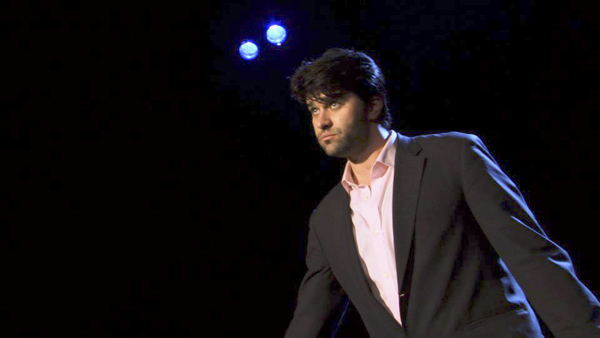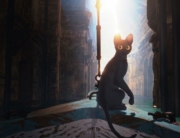Pay attention to the man behind the curtain. He may be just as talented as the wizard you’re watching onstage. Such is the thesis of The Standbys, which follows three Broadway hopefuls as they perfect the art of waiting.
An understudy is someone who has a minor role in a show and yet learns one or more of the other parts in order to be able to replace a missing performer. A standby, however, has no role other than to substitute for one of the starring roles. In this age of celebrity-powered Broadway productions, standbys are critical for producers and dreaded by audiences.
“It’s no good without Nathan Lane,” says one disgruntled audience member waiting outside The Addams Family on hearing that Merwin Foard, the standby, will be stepping in. Foard is regarded by industry professionals as having one of the best voices in the business, but family and other responsibilities have contributed to his never having become a star in his own right. Instead, he has made a career of standing by.
In such an unpredictable field, Foard’s string of steady work is impressive. At the same time, “Most stars would rather die” than have the standby go on, says one producer. So Foard has gone long stretches without working at all, at least in terms of working a crowd. He still harbors a dream to get a “big boy” role of his own.
As do Aléna Watters and Ben Crawford, the two more wide-eyed subjects of the film. Aléna, who is more or less a real-life thoroughly modern Millie, suffers through a series of secondary gigs, including a stretch as a swing, the most difficult backup job of all. Swings memorize all of the vocal and dance tracks in a show, making them able to step in for any part at any time. It requires prodigious talent, which Aléna has, and can create great demand for someone with this skill. The problem is the demand may pigeonhole her as a perpetual swing.
Ben starts the film as a standby in Shrek the Musical. He plays video games and staves off boredom while waiting through each and every of Brian d’Arcy James’s performances of the titular ogre. Changes in the cast lead to a potential breakthrough for Ben, who then passes through the dizzying ups and brutal downs common to the profession.
At times The Standbys feels more like a commercial for Broadway than much else. Yet while Aléna and Ben still dream of show business sugar plums, it’s clear that the Great White Way is ailing. Bebe Neuwirth, herself an alumna of the standby ranks, calls Broadway’s current celebrity fixation “a syndrome.” If seeing a standby produces “waves of hatred” emanating from the audience, the shows may not be of high enough quality to justify the exorbitant ticket prices.
If The Standbys does nothing else, it humanizes these too-often disparaged replacements. Tony winner David Hyde Pierce sums it up best. Yes, it may be disappointing to learn that today’s show features an understudy, but he gently asks audiences to remember that while “this is an afternoon for you. This is their life.”







Leave A Comment